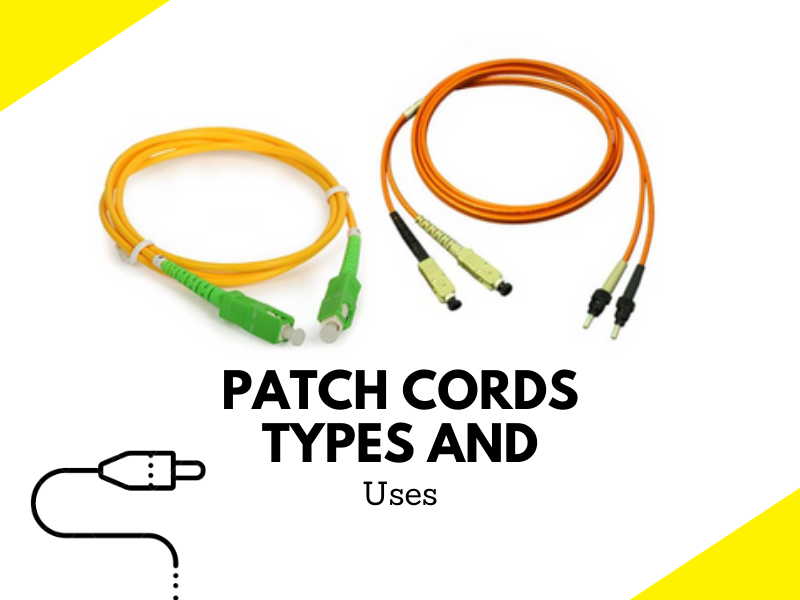
Patch Cords Types and Uses
A patch cord is also known as a patch cable or patch lead, is an electrical cable that is used to connect one electronic or optical device to another for signal routing. Patch Cords are considered to be an essential part of the structured cabling system.
It is usually for network applications to “patch” a signal from one hub, switch, or router to the other hub, switch, or router. Patch cables can be used for a variety of signals such as – telephone, audio, video, and different digital signals for networked and non-networked applications.
Types of Patch Cords
Copper patch cords are either composed of solid or stranded copper. Due to their potential signal loss, their lengths are typically shorter than connector cables. While fiber patch cords are fiber optic cable that is capped at both ends with connectors. The caps allow the cord to be swiftly connected to an optical switch or other telecommunications device. The fiber patch cords are also used to connect the optical transmitter, receiver, and the terminal box.
Selecting Copper Patch Cord
If you’re selecting copper patch cords than there are few key elements that you should keep in mind –
Size –
Copper patch cord with small outside diameter takes less space and also has a smaller bend radius. It allows it to be deployed in space-deprived environments and offers more working space for potential expansions in the future.
Twinning –
Stable and consistent twinning process helps the internal cable characteristics. It also helps in reducing signal loss during physical manipulations.
Bonded-Pair Technology –
It guarantees uniform spacing between the twisted pair as well as reliable electrical performance.
Other than the above mentioned components you should take care of its length, connections, types of testing, and traceability.
Selecting Fiber Patch Cord
Follow the below considerations while choosing fiber patch cords –
Which type of connector is required –
LC, SC, ST, FC, MPO, or MTP each offers its pros and cons. The right selection of connectors helps speeding up deployment and reduces cost.
Mode of patch cords –
Single mode patch cords are used for long distances while multimode patch cords are used for shorter distances.
Length of patch cord –
Fiber patch cords are available in a variety of different lengths such as 2m, 3m or 5m. The right choice of patch cord will help in eliminating slack and potential damage due to kinking.
Type of Cable Jacket –
Depending on the installation location, surface cabling jacket is available in a variety of configurations to protect the cable’s insulation and conductor core. Selecting the right jacket (single jacket, plenum rated, double jacket armored, double jacket heavy duty, etc) will help ensure proper performance.
Conclusion
Patch cords are used to connect various components and instruments in fiber optic systems. Choosing, installing, and maintaining the right patch cord type affects today’s network in many ways. For more information about patch cords and choosing the right one, visit http://www.santron.in/
If you have any doubts or queries, feel free to contact us.

